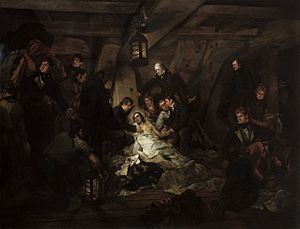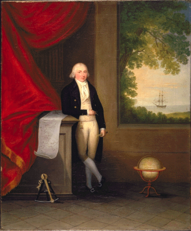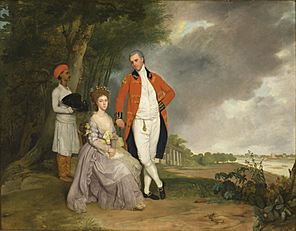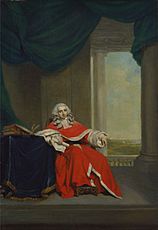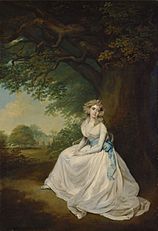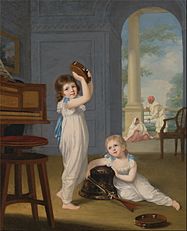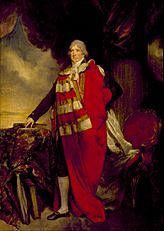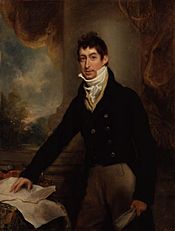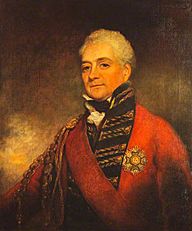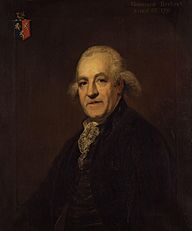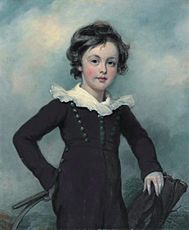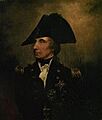Arthur William Devis facts for kids
Arthur William Devis (born August 10, 1762 – died February 11, 1822) was a talented English painter. He was known for his history paintings, which show important events, and his portraits of people. He showed many of his artworks at the Royal Academy in London. One of his most famous paintings is called The Death of Nelson. He also painted a portrait of the famous Admiral Horatio Nelson after Nelson had passed away.
Contents
Early Life and Training
Devis was born in London. He was the nineteenth child of a well-known artist, Arthur Devis. His older brother, Thomas Anthony, was also a painter. His sister, Ellin, was a schoolteacher who taught famous writers like Maria Edgeworth.
Arthur William Devis followed his brother and started studying at the Royal Academy Schools in 1774. He also showed his paintings at the Free Society of Artists. The famous painter Sir Joshua Reynolds noticed his talent early on.
Adventures and Art Abroad
In 1783, Devis became a draughtsman for the British East India Company. He joined a ship called the Antelope. During this trip, he was hurt by arrows near the Schouten Islands. His ship was later wrecked near the Pelew Islands.
After these adventures, he traveled to Canton and then to Bengal in India. While in Bengal, he painted a portrait of Sir William Jones. Sir William was a judge there at the time. This painting can now be seen at the British Library.
Return to London and Nelson's Legacy
Devis came back to London by 1795. He became very important in honoring the memory of Admiral Horatio Nelson. After the Battle of Trafalgar, Devis went to meet HMS Victory. He was even on board the ship when Nelson's body was examined by Dr. Beatty, the ship's surgeon.
Devis made sketches during this time. He used them to paint his famous and dramatic artwork, The Death of Nelson. This painting became very popular.
Devis also painted a portrait of Dr. Beatty. Dr. Beatty then asked Devis to paint a portrait of Nelson as a vice-admiral. Many copies of this portrait were made. One copy is now at the National Maritime Museum.
Other Notable Works
Devis painted a portrait of King George III riding a horse. He also painted many admirals and generals. He created historical paintings about events like the Babington Plot and the signing of the Magna Carta.
Perhaps one of his best-known paintings is Master Simpson (1780). This painting shows a small boy, James Alexander Simpson, holding a dog. This artwork has been copied and used commercially many times.
Despite his success, Devis often faced money problems. His brother, Thomas Anthony Devis, passed away in 1810. Arthur inherited his brother's books and prints.
Arthur William Devis died in London in 1822. He was buried in the churchyard of St Giles-in-the-Fields.
Gallery
-
Portrait of James Duff, 2nd Earl Fife (1805)
-
Major-General Sir David Ochterlony (1816)
Images for kids
-
Sir William Beatty, Victory's surgeon at Trafalgar (1806)
-
Devis's posthumous portrait of Horatio Nelson


